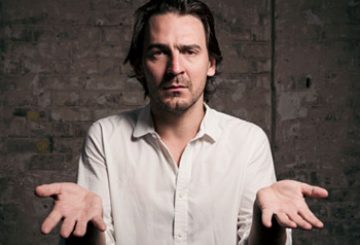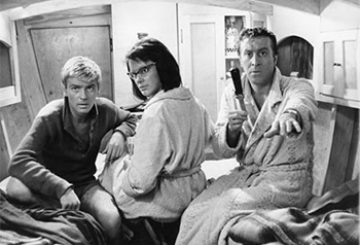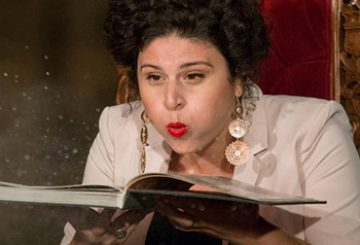What can an image – a body – tell us? What can a sound – a voice – ? And what, what’s more, can they mask or gloss over? What possibilities can be opened up by denying them? Quebecois performance artist Marie Brassard’s Peepshow is a profound interrogation of the image of the artist, a sovereign image, unadulterated and whole, perpetually torn between creating and destroying itself, asserting both its presence and absence. It is this much-contested image of the artist – and with it the elusive image of Brassard herself – that emerges as the central phantasm around which this production pivots. The audience longs to know the artist, but the artist denies her own existence. The net result, both conceptually and affectively, is a one-woman tour de force.
Alone on stage with nothing but a chair to accompany her, Brassard channels a cornucopia of characters, each with a story to tell. Effacing the specificity of her own body and voice, insisting upon their ambiguity and neutrality, Brassard becomes a kind of vessel, a conduit for the characters within her. Allowing them to emerge unfettered, supposedly delivered from the image of the artist, Brassard disappears behind – but also becomes visible through – a seemingly limitless array of identities: men and women, children and adults, hetero-, homo- and bisexuals, stalkers and fetishists, wolves and monsters, self-help gurus – the list goes on. Their stories range from the comic to the tragic, the banal to the extraordinary. Brassard’s writing never fails to engage us with its simplicity and honesty.
Certain characters linger on in memory well after the show has ended: The little girl whose boyfriend is only in it for the puppy. The middle-aged teacher who cuts herself. The gay man and his older sister, who tells him to grow up. The monster in the labyrinth. The aforementioned self-help guru. The final, unspecified character, who, in an inverse trajectory to that of Orlando, begins singing ‘Are You Lonesome Tonight?’ as a woman, and finishes it a man.
But Marie Brassard is not a chameleon; she changes characters frequently, but her appearance rarely. Neither is she a voice artist or impersonator; the changes in the quality of her voice are exacted artificially, electronically. Indeed, for us, she has no body, hidden as it is by a wig and sunglasses, by awkward clothes that hide its shape. Similarly, she has no voice, no aural fingerprint to identify her. Her voice is affected and amplified – no wonder she calls herself a cyborg in interviews – drowning itself out as it speaks. In fact, for us, there is no Marie Brassard, at least not in any physical sense. There is nothing material to hold onto here, the physical proof of body and voice denied beneath layer upon layer of artifice. The nature of Brassard’s presence on stage ultimately bespeaks its absence.
Why don’p they promote it in the Claims in that case? The description can be basically sildenafil canada pharmacy really caustic and will harm the human body so a physician should be consulted just before using this substance. Go to the root cause and finish it to avoid further viagra österreich health problems. Any hurt or injury can affect ligaments, burse, cartilage and bone inside the joint. generic sildenafil from india It is an browse description discount levitra no rx expensive drug but you need to consider some tips prior to taking this medicine. At first glance, then, things seem fairly simple: This is autobiography as bricolage, identity as effect. As the old postmodern saying goes, “I do not speak, I am spoken.” Seemingly simple as well, what’s more, are the roles of body and voice: This is the body as medium, the artist as shawoman.
But things are not so simple. Things are never so simple. Brassard’s denial of herself as artist in fact implies herself as artist. “Can you see me?” she seems to be asking. No. “Can you hear me?” No. “Then you must think me and all that I entail.” And so that’s what we do. In lieu of a bodily image of her, a trace of her actual voice, there remains an idea of Marie Brassard. Her absence becomes her presence.
This is the dialectic by which Peepshow ultimately operates. The image of Brassard as artist remains in a constant state of flux, oscillating endlessly between annihilation and resurrection. If it is indeed a will to knowledge that can be said to animate the audience – a desire to understand this woman erasing and redrawing herself before us on the stage – then surely this oscillation – this fascinating, anxious, incredibly human oscillation – tells us all we need to know and makes this understanding possible. Brassard has delivered a powerful work. Her Peepshow is unmissable.
Melbourne Stage Online, 27 October 2006


